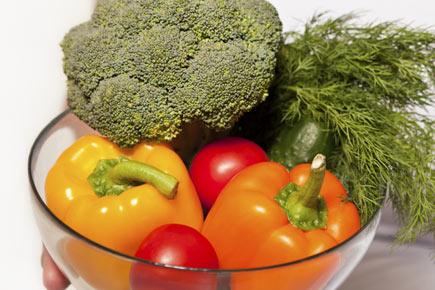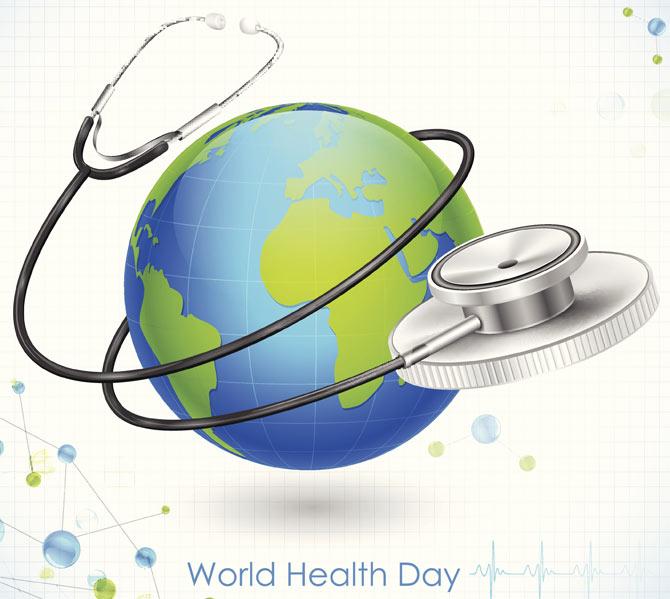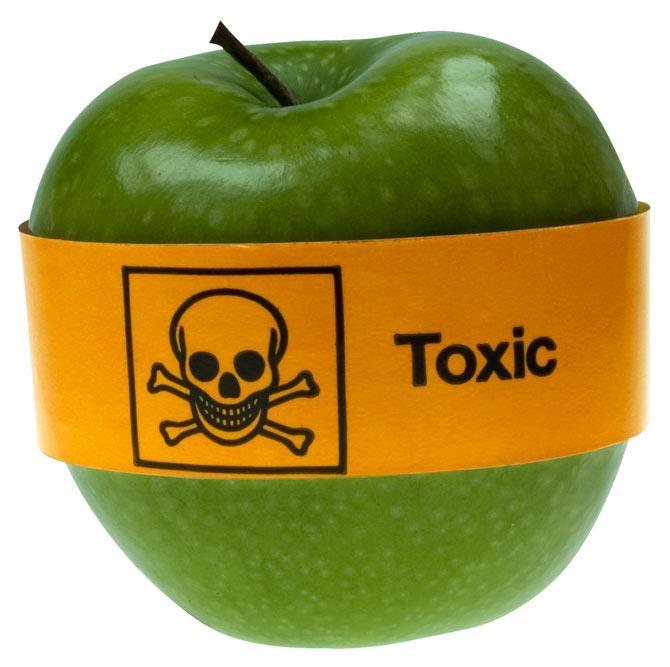The World Health Organisation (WHO) has designated "Food safety: from farm to plate, make food safe" as the theme of this year's World Health Day...

World Healthy Day, food safety
World Health Organisation (WHO) has designated "Food safety: from farm to plate, make food safe" as the theme of this year's World Health Day.

It includes food safety along the whole length of the food chain in a globalised world, from production and transport, to preparation and consumption.
ADVERTISEMENT

Representational picture
In a statement, WHO's South Asian director Poonam Khetrapal said food safety was one of the key focus areas under the International Health Regulations -- IHR 2005 -- which include all public health emergencies of international concern that involve contaminated food and outbreaks of food-borne diseases.
Gluten intolerance, a major concern: Experts
According to the World Health Organisation, food allergy, which includes gluten intolerance, kills over 2 million people globally. Doctors say its a condition that causes reaction in an individual after consumption of gluten - a protein found in wheat, barley, rye and other cereals. Symptoms vary widely and include gastro-intestinal problems.

Representational picture
The condition, which starts from childhood and continues into adulthood has to be managed through restrictions on the diet. The one reason for people not knowing of gluten intolerance has been lack of specific tests, which only started about five years ago. Noting that three to five of every 100 children in India suffer from gluten intolerance, Nishant Wadhwa, senior consultant and pediatric gastro-enterologist at the Delhi-based Sir Ganga Ram Hospital said that if they continue to be fed dishes made out of wheat, bajra and other cereals, the individual may suffer from infertility in later life, apart from intestinal and stomach cancer. Dr Wadhwa further added that if a child is fed wheat with mother's milk while 3-5 months old, the problem can be prevented.
Food contaminated by pesticides causing several casualities
According to recent studies, use of pesticides and fertilizers in the past 50 years has grown nearly 170 times. As a consequence, persistent residues of the chemicals contaminate food and disperse in the environment and find their way into the food chain.

Representational picture
Behram Pardiwalla, consultant internal medicine at Wockhardt hospital said tackling the problem was necessary because toxic compounds like pesticides, heavy metals and toxins of fungal or bacterial origin could also contaminate the food during manufacture, storage or transportation. He observed unsafe food kills an estimated 700,000 children in Southeast Asia alone every year.
Apart from urging the governments of the countries to ensure food safety, some medical experts also said that there was a need to work with NGOs to raise awareness among the people.
Graphene can detect deadly food toxin
Graphene is the new buzzword in the global electronics industry and scientists at the Indian Institute of Engineering Science and Technology (IIEST) have applied its unique properties to sniff out a deadly cancer-causing food toxin with high sensitivity, just like finding a needle in a haystack.

Representational picture
And the toxin in question, Aflatoxin B1 (one from the aflatoxin group of natural poisons), is a common contaminant in peanuts, chillies, cottonseed meal, corn, rice and other grains. Produced by a fungus, it is a potent liver carcinogen, impairs immune system and hinders growth in humans and animals. Approximately 4.5 billion people living in developing countries are chronically exposed to high, uncontrolled levels of aflatoxin. Moreover, there is a lack in awareness about these toxins in India, pointed out B.N. Reddy, professor, Mycology (study of fungus) and Plant Pathology Lab, Department of Botany, Osmania University, Hyderabad. Toxin presence also affects trade in food commodities with other countries. To manage the menace, one of the ways is employing simple and affordable detection techniques, said Reddy.
The use of graphene and other carbon-based nanomaterials, are growing rapidly, ever since its discovery a decade ago. At the same time, recent studies have suggested graphene may be toxic to humans and create environmental hazards as well.
Apart from healthy food, regular exercise is a must
Cardiovascular disease, diabetes, and osteoporosis - Indians are facing an unhealthy future burdened with a slew of lifestyle diseases. But instead of expensive medication and therapy, the cure lies in making exercise a compulsory part of everyday life, health experts say. Various surveys done in India have shown that the incidence of coronary heart disease is 8-10 percent in urban areas and 5-6 percent in rural areas. Osteoporosis-related injuries such as vertebrae fractures not only cause pain but also degrade the quality of life, curtail movement and increase dependence. According to the International Osteoporosis Foundation, the malaise annually causes more than 8.9 million fractures around the globe.

Representational picture
To make exercise a national culture, apart from awareness, many enabling policy measures are also needed.
The latter half of the 20th century has brought substantial progress in disease control due to expansion of health infrastructure. With food and nutritional consumption also improving for a vast majority of population, life expectancy in India has gone up over the years. Experts say that deaths due to communicable diseases have decreased while those from non-communicable diseases (NCDs) have risen.
NCDs at present account for 53 percent of all deaths and 44 percent of disability adjusted life-years lost. Projections indicate a further increase to 67 percent of all deaths by 2030. Cardiovascular disease is the major contributor to this burden, attributable to 52 percent of NCD-associated deaths and 29 percent of total deaths.
 Subscribe today by clicking the link and stay updated with the latest news!" Click here!
Subscribe today by clicking the link and stay updated with the latest news!" Click here!







